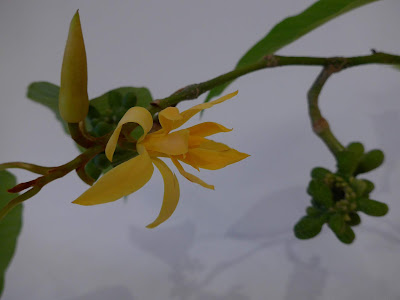I arrived in Australia when I was eleven years old together with my parents and two younger sisters. We came from a very poor village in Northern Greece, in fact we were subsistence farmers. My parents' very meagre income was supplemented by my father's fishing. We just made do.
My parents were further burdened by the knowledge that they would have to, somehow, find dowries for three daughters, if they were to marry.
Coming to Australia was, literally, life saving for us. My parents, like most migrants and without a word of English, worked extremely hard to establish themselves and to raise and educate us. It was, also, extremely difficult for us, the children. In particular for me, the eldest. I was responsible for my sisters, one seven and the other two.
Despite extreme hardships initially, we are eternally grateful to this country for accepting us and for allowing us to become its very proud citizens. This is an amazing country, deserving of the description 'The Lucky Country'. Certainly, I and my family will always feel lucky to be calling Australia home.
In honour of Australia day, I wanted to make an arrangement using only Australian natives. I headed straight to my go-to casuarina tree that grows by the side of the road. This little tree has some very interestingly curving branches and I found one that I liked. I brought it home and, after struggling with the mechanics for over an hour, I broke the branch, cut my thumb and gave up, in disgust, on the 'interestingly curved' branch and settled for one that was more cooperative. Then I had to find native flowers to put with it and that was an impossibility. So I settled for the blue and white hydrangeas.
This morning, however, I was not satisfied with this compromise and set myself the challenge to make another arrangement, this time using the two native materials that grow in my garden - gymea lily leaves and acacia aphyla.
I felt that the arrangement was complete (and all native) without the addition of flowers but, after photographing it, I thought I'd try placing flowers. As I said before, I have no native flowers, so, again, I compromised and used non-native flowers. This time the red crucifix orchids.
I recently came across a beautiful, small tree that I had not seen before. The owner has no idea what it is but allowed me to take a cutting. I'm hoping someone will recognize it and be able to tell me what it is. The yellow flowers are quite sparse and have a strong perfume. There is, also, on the same stem a cluster of what appear to be seed pods.
We've had some record breaking temperatures recently (mid 40s C in our area) but we managed to protect most of our precious, vulnerable plants. Sam and I used seven old sheets to cover hydrangeas as well as a number of other plants and kept up the watering. However, sadly, we used up all the water in our rain water tanks in the process. From here on, we will have to rely on mains water, albeit sparingly.
The crocosmia, in the arrangement, below, was not affected by the heat but the hydrangeas only survived because they were covered.
My daughter and her family moved in with us two weeks ago, whilst their house is undergoing renovations. It was little Aria's birthday the other day and we celebrated it here this morning. Yesterday my daughter, Madeline, Aria and I worked on her birthday cake - a Dolly Varden, chosen by the little miss from the old Women's Weekly Cake book. This was a very pleasant experience, especially when it occurred to me that we were three generations of females working together.
 |
| It's a simple cake but it made Aria very happy |
 |
| I couldn't resist including a photo of our little precious. |
Oh, and just one more thing. In my last post I wrote about gloriosa lilies. I have since spoken to Jan from the Gloriosa Farm here in Victoria, from whom I bought my first rhizomes. She corrected me on the scientific name of the ones I grow. They are not gloriosa superba, as I thought but, rather, gloriosa rothchildiana.
Bye for now,
Emily







Thank you for sharing your family background, it is very interesting.
ReplyDeleteI appreciate you writing about your struggle with that curved branch. It makes others feel good to know that even high-level teachers can sometimes have trouble with the mechanics for certain materials:)
I can imagine the fun you, your daughter and granddaughter had baking that oh so cute cake. It looks lovely.